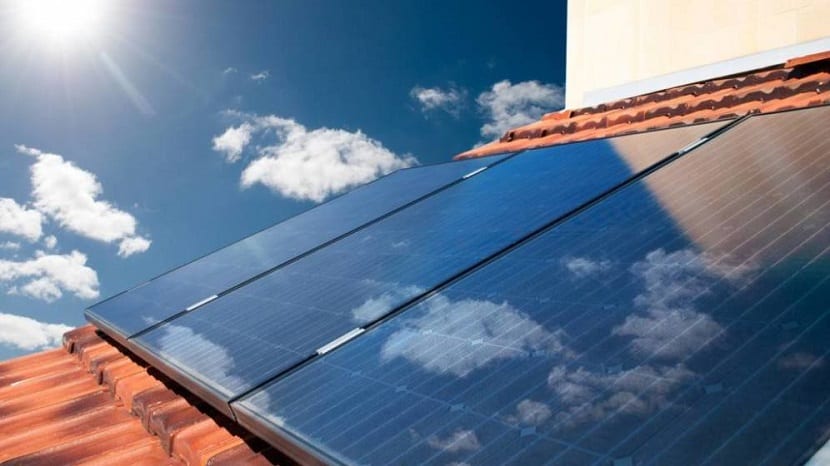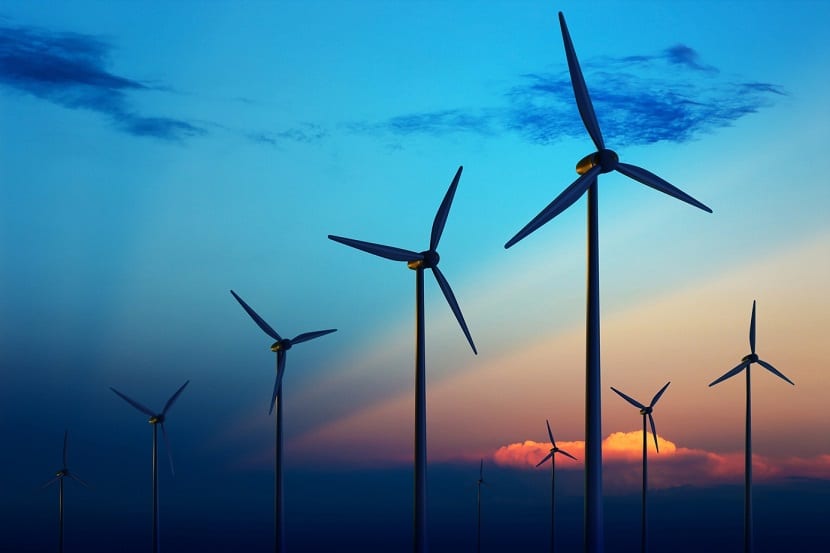
The generation of electricity with renewable sources in Nicaragua is around 53% of the total, but this year, according to the Minister of Energy and Mines (MEN) Salvador Mansell, there are several days in which these sources supplied the network up 84% of the energy used in the country.
This means, according to the government, the great potential that the country has in clean energies. The minister of the MEN commented that in months like November, April or March, when the country has strong winds, all wind farms work at 100%, in addition to the contribution of hydroelectric plants, generation reaches approximately 84% with renewable sources .
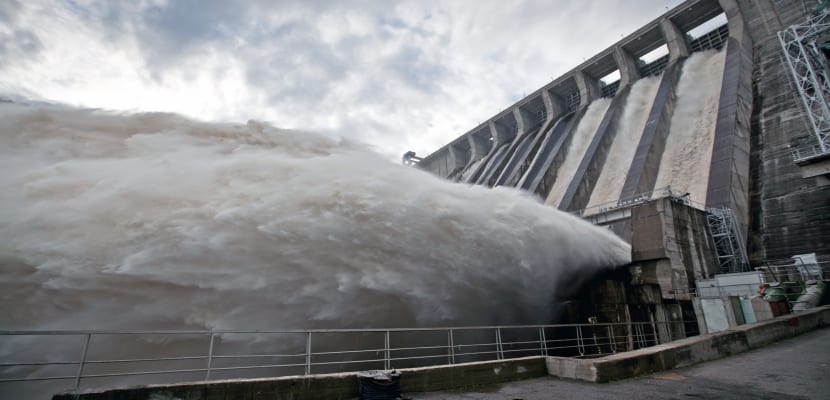
Mansell added that “When conditions are optimal for renewable sources to be able to generate, they are prioritized in the daily operation of the system and it is important in market management. In the country we are making the most of natural resources ”.

In fact, Mansell did not rule out that this year there are days in which it is possible to achieve a rise above 85% of generation with clean sources, although he insisted that several must be met. climatic conditions to reach that new record. In addition, in 2017 a new 12 megawatt solar plant was inaugurated in the Puerto Sandino sector.
According to the government: “We have thermal generation, but it is to support, when there is a problem, when there is no wind, there is no rain, there are problems in the solar part, then we have the thermal backup to continue the energy service to the population ”.
2016 closed at 53% stable generation with renewable sources and the goal of the institutions is to increase this figure.
World Reference
In fact, Nicaragua continues to be an example of the production of electricity with renewable sources. Recently, the foundation The Climate Reality Project - founded in 2006 by the former Vice President of the United States, Al Gore - recognized the country as a of the three nations, together with Sweden and Costa Rica, which are setting the path to follow in this field worldwide, which is the main way to reduce greenhouse gas emissions.
And is not for less. The 27.5% that represented the generation of renewable energy in 2007, went to 52% in 2014, and 53% in 2016. The great goal of the Government is to achieve 90% in 2020, with public, private and mixed investment projects. Between 2007 and 2013 alone, wind, biomass, hydroelectric and solar projects supplied an additional 180 megawatts to the national electricity distribution network, which each day has a demand of 550 megawatts.
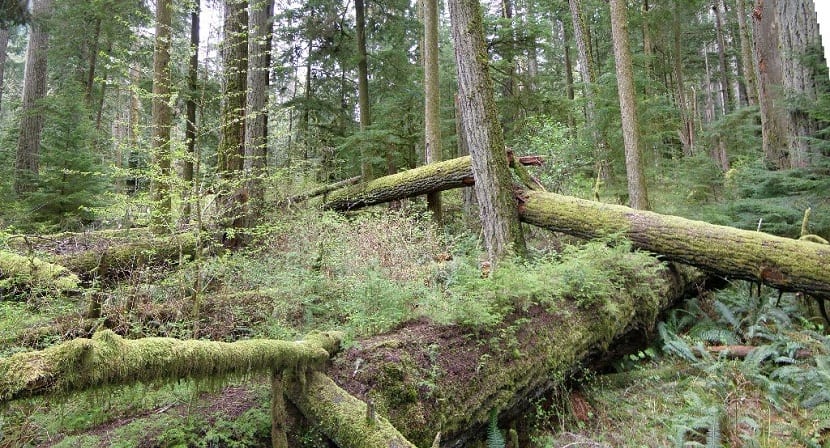
Wind energy in Nicaragua
As mentioned above, the National Interconnected System (SIN) recorded that in 2016, the percentage of electricity generation with renewable sources reached 53%. The wind power plants they represented 31%, geothermal plants 28.6%, hydroelectric plants 26.8% and sugar mills 13.6%.

In the case of wind energy, the most representative projects in the country are Amayo I and II located in the department of Rivas and directed by the Canadian consortium Amayo SA, which produce about 63 megawatts

This year, the contribution of the photovoltaic plant which is in Puerto Sandino, at the moment it is the only one that generates solar energy for the country's distribution network.
In fact, solar energy is very present in the country, but more for an individual generation.
At the end of this year, the government aims to achieve 94% electricity coverage in the national territory. "Based on the plans and processes developed, our goal is to reach 2021% electricity coverage by 99," said Mansell.
Diversity of sources
The country has the Tumarín hydroelectric macroproject, which is under development in the southern Caribbean of Nicaragua, according to projections will provide 253 megawatts, once it starts its operations at the end of 2019.
César Zamora, country manager of the energy company IC Power, pointed out that Nicaragua's commitment to clean energy emerged as a solution to the crisis of electricity shortage experienced by the country before 2007.
“The Law for the Promotion of Electricity Generation with Renewable Sources was proposed and with the new Government (2007, Daniel Ortega) began a dialogue with representatives of the energy sector and Cosep (Superior Council of Private Enterprise) to plan how to get out of that crisis, ”he recalled.
Zamora mentioned that it has been possible to inject 180 megawatts of wind energy into the distribution network, 70 megawatts of geothermal energy from the San Jacinto-Tizate complex, 50 megawatts of hydroelectric power from the projects larreynaga (state), Hidropantasma and El Diamante, which became operational last December, while in biomass A plant with 30 megawatts and the Santa Rosa and San Antonio sugar mills, with 80 megawatts between the two, have come into operation.
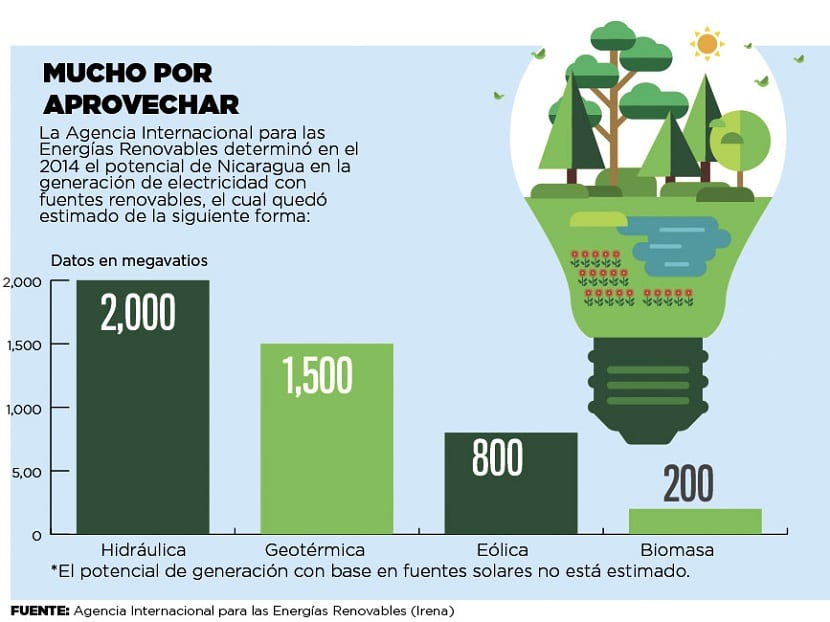
International Commerce
For Jahosca López, coordinator of the Nicaraguan Renewable Association office, the country's great boom in this sector is due to the policies that the Government has promoted to encourage national and foreign investment, specifically the Law for the Promotion of Electricity Generation with Renewable Sources.
In June 2015, said law was amended by the National Assembly to extend the incentives for new renewable energy projects for three more years.
One of the arguments given on that occasion by the legislators was that as the country transforms its energy matrix the electricity tariff is reduced.
The coordinator also highlighted that technological development has influenced, which has allowed the formulation and execution of projects in a more efficient, in addition to promoting the social development of certain communities with an environmental focus.

